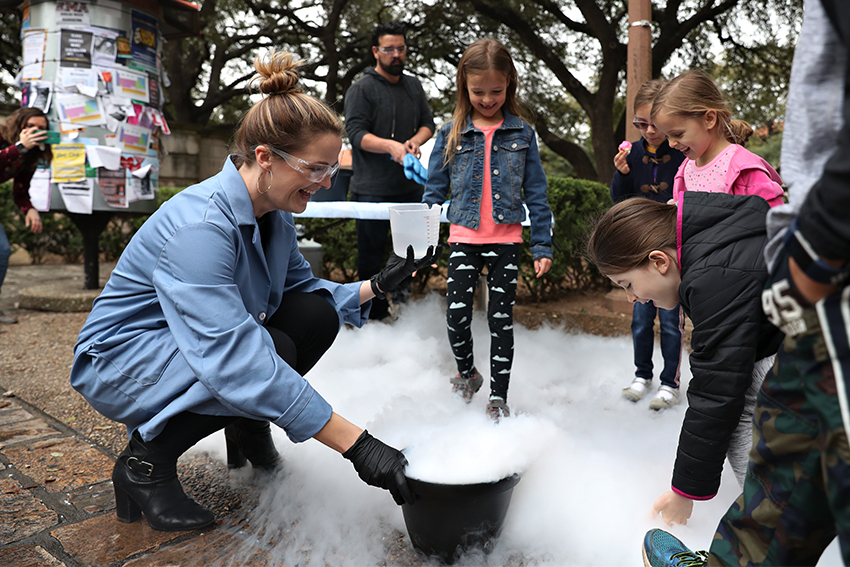Feb. 7, 2019 marked the 150th anniversary of the first publication of the periodic table of elements. In commemoration of the event, the College of Natural Sciences organized a morning of chemistry demonstrations, decorated “element” cupcakes and periodic table giveaways in celebration of chemistry’s most well-known tool.
Joanna Chyu, president of the Natural Sciences Council, the representative body of CNS, helped organize the event along with the American Chemical Society, CNS Women in Natural Sciences and CNS Dean’s Scholars.
“(The periodic table) lays out the foundation for the life sciences,” said Chyu, a biochemistry and Plan II senior. “Every element has its own unique properties, and the life sciences basically spring from the properties of the elements.”
The celebration, however, sprang from the mind and efforts of award-winning UT scientist Kate Biberdorf. Biberdorf, a chemistry associate professor, began the event by roping in CNS Dean Paul Goldbart to help her create “elephant’s toothpaste,” a mixture of dish detergent, hydrogen peroxide and burnt orange food coloring.
By adding an iodine catalyst, Biberdorf and Goldbart turned the concoction into volcanic explosions of orange foam. It was the first of many moments that garnered cheers and laughter from the crowd, which included UT students and staff, visiting students from an Austin-area high school and a dozen young children with their parents.
But young people weren’t the only ones captivated by the event — adults such as Goldbart also enjoyed the day of celebrating the periodic table.
“The remarkable thing about this table is that it really is a roadmap for doing lots and lots of chemistry,” Goldbart said. “It’s a lovely interplay of all sorts of scientific ideas.”
The show went on to include careening waves of dry ice bubbles and 10-foot plumes of liquid nitrogen fog. At every chance, Biberdorf explained the chemical processes to her audience, turning the spectacle into a visual classroom. She said these techniques are the same ones used in her general chemistry classes.
“Chemistry is hard to visualize,” Biberdorf said. “But I can use the demonstrations to talk about what the atoms are actually doing at a molecular level. It’s one trick in the classroom to help students actually see the chemistry.”
Biberdorf’s next project is an attempt to break the Guinness World Record for the largest chemistry lecture ever on March 2.





















